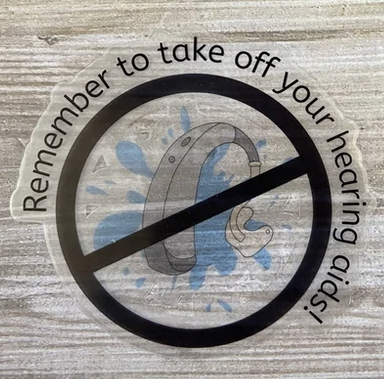By Wynne Whyman
I am a patient with long-time progressive hearing loss, using a cochlear implant and a hearing aid.
Credit: @mark0polo/Unsplash
It took 25 years for me to learn about assistive listening systems, which started my individual advocacy—and over the years, evolved into my current role at the Center for Hearing Access, a national advocacy and education nonprofit.
In my various conversations with other users of hearing devices and patients with hearing loss, I have found that the vast majority are shockingly unaware they have the right and option to hear more clearly in public and private places.
For years, I continue to ask myself: why? It’s complex with many interrelated pieces—with the manufacturers and providers being two of the key pieces.
We at the center are deeply concerned about users/patients being able to easily connect their hearing devices to all assistive listening systems. These include current and future technologies: hearing loops, FM/RF, infrared, and Auracast.
In the United States, assistive listening systems are mandated by the Americans with Disabilities Act (ADA) to give people with hearing loss the clarity that is impossible to receive with hearing instruments alone.
However, there are multiple challenges for users to access these assistive listening systems. We consistently find that users/patients are frustrated when they learn their hearing aids do not have telecoils, and as a result they cannot access hearing loops, FM systems, and infrared assistive listening systems to which they are entitled under the ADA.
Once they learn about the options available to them by having telecoils, they do not understand why they cannot “have it all” in their hearing aids or cochlear implants.
They want and need Bluetooth, telecoils, and Auracast (when it is available in the future)—and many would also like rechargeable batteries and other features. We wonder why decisions are made that preclude having all these options for patients who want them.
When Auracast was first announced we were promised direct-to-hearing instrument connectivity without an intermediary device. We were thrilled because this is the capability that a telecoil provides.
But recently, we are seeing more and more mention of an intermediary device. Intermediary devices add complexity and barriers for individuals with limited dexterity, limited cognitive abilities, or limited tech familiarity. Intermediary devices are one more thing to remember, charge, and troubleshoot. The need to borrow equipment adds to the stigma of hearing loss.
We request that manufacturers produce—and hearing care providers fit—what we are terming “ADA-Access-Ready” hearing instruments that connect to ADA assistive listening systems via telecoil (hearing loops, FM, and infrared), and future Auracast and other technologies. These fully “ADA-Access-Ready” hearing instruments will require:
Both telecoil and Auracast connectivity embedded in the hearing instruments, and not merely offered in an accessory device.
Direct-to-hearing instrument connections for both telecoils and Auracast. No intermediary device to be required, at least for connection to the dedicated assistive listening stream.
Ensuring equal access to sound is not a luxury—it’s a right. Together, we can push for hearing devices that truly meet the needs of all users, without unnecessary barriers.
Let’s make “ADA-Access-Ready” the standard for hearing instruments.
Wynne Whyman is the director of communication and advocacy for the Center for Hearing Access in Eugene, Oregon. The center champions and educates users, facilities, hearing instrument specialists, and audiologists about all ADA-compliant assistive listening systems and other strategies to increase access to theaters, libraries, conferences, government offices, healthcare facilities, courtrooms, places of worship, and other public and private spaces. The center creates and provides advocacy materials, ADA information, a speaker’s bureau, videos, templates for users and owners/operators, articles, and vendor lists. For more, see centerforhearingaccess.org.








New survey results present a close look at why people do—and don’t—use hearing aids.